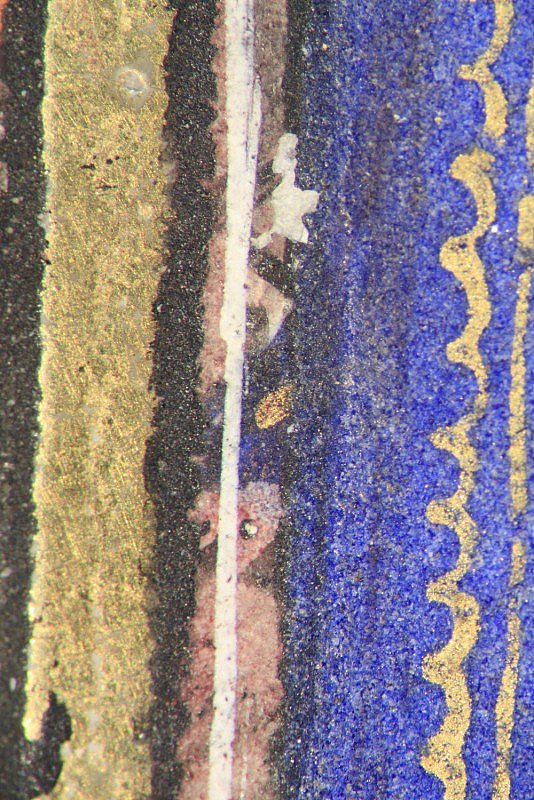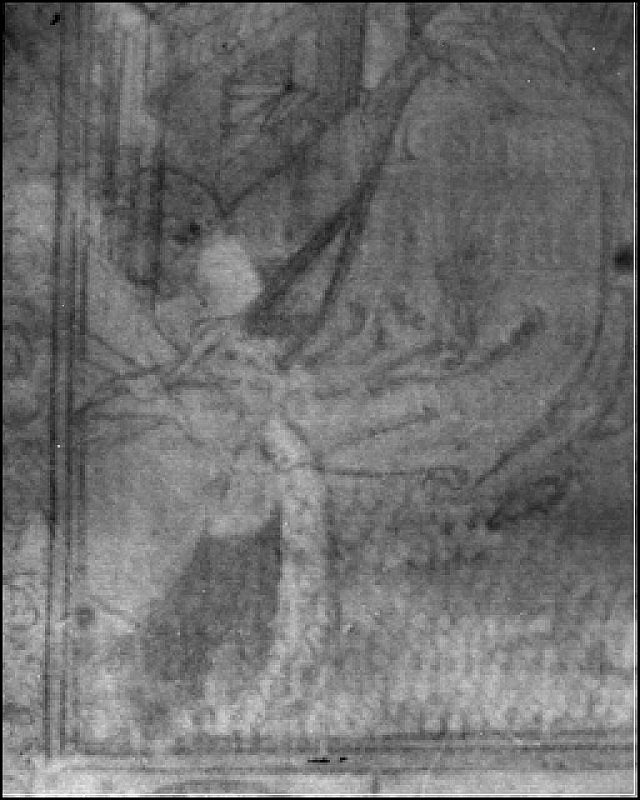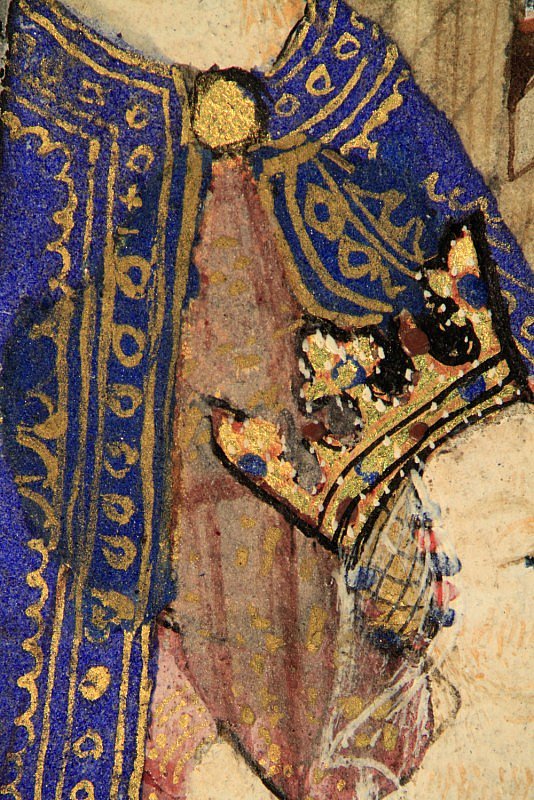Blue pigments
Artists' Materials
Precious ultramarine blue was used by all the main artists in this manuscript, both in the figurative scenes and in the decorated initials. The blue ink used for rubrics and captions is also ultramarine. The blue foliage which enriches the borders was painted with both ultramarine and azurite, usually juxtaposed to create shadows and highlights.
The cheaper azurite blue was also used in some decorated initials and, on selected folios, in the diamond-pattern background of large and small miniatures. It may have been used by assistants who were completing the images painted by the more accomplished artists. For instance, the chequered background on fol. 18v contains both ultramarine and azurite, suggesting that the Rohan Master painted some of the background, but left its completion to an assistant.
The assistant who painted the three large miniatures on fols. 119r, 134r and 147r used mixtures of ultramarine and azurite in all his blue areas, including draperies.
The two Breton illuminators who altered or added images in the 1440s and 1450s used only azurite.



The Virgin and Child with a patron (prayer Obsecro te)
The marginal scene showing Christ’s encounter with the devil belongs to the cycle illustrating the Pilgrimage of Jesus Christ. The arms of Isabella Stuart have been added to the border. Her portrait was painted over that of the original patron kneeling before the Virgin and Child. The overpainting was done in two stages. During the first stage Isabella’s face and heraldic dress were painted over the original ones, and the figure of St Catherine was added (hotspots 1 and 2). The red of Isabella’s ermine-lined coat (cotte) is the same pigment, vermilion, as that used for her arms in the border, while the original red elsewhere on the page – in the main image, the marginal miniature and the floral border – is red lead. St Catherine’s garments were painted in insect-based organic pink and ultramarine blue, except the darker, oval area behind Isabella’s head which was painted in azurite instead. It conceals the head dress of the original patron, which Isabella retained at first. During the second stage of overpainting, the head dress was covered with azurite and Isabella’s ducal coronet was painted over it (hotspot 3). The latter change is clearly visible in the near-infrared image (see Infrared Layer).
The alterations were most probably commissioned by Isabella’s husband-to-be, Francis I of Brittany. The first step – the overpainting of what was probably the portrait of his first wife, Yolande of Anjou, and the addition of St Catherine and of Isabella’s arms – would have been prompted by preparations for Francis’ wedding to Isabella on 29 October 1442. On 29 August 1442, Francis succeeded to the duchy of Brittany and Isabella’s coronet must have been added after that point, since she would have become a duchess upon her marriage two months later.
Related content: The Hours of Isabella Stuart
Related content: Lab
- Overview of Artists' Materials: Azurite
- Overview of Artists' Materials: Cinnabar and Vermilion
- Overview of Artists' Materials: Minium and Red lead
- Overview of Artists' Materials: Ultramarine
- Analytical Methods: Infrared reflectography
- Analytical Methods: Near-infrared imaging
- Analytical Methods: Optical microscopy
- Overview of Artists' Techniques: Underdrawing
